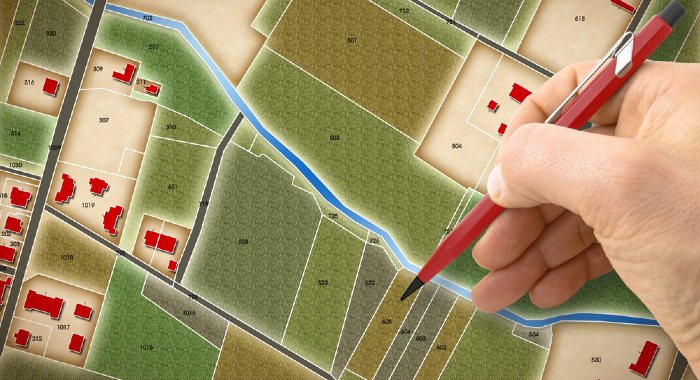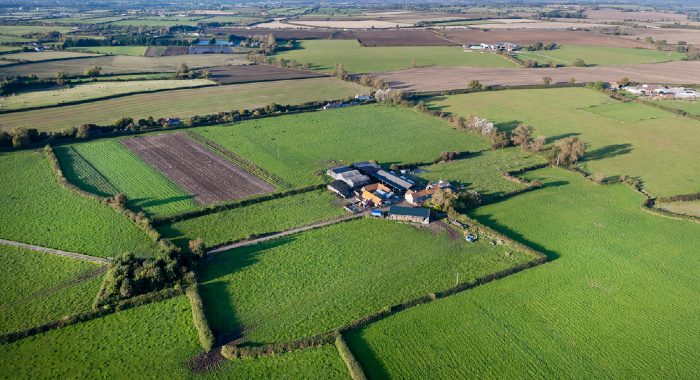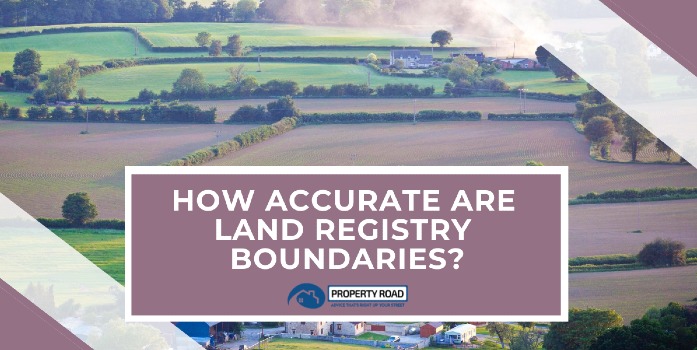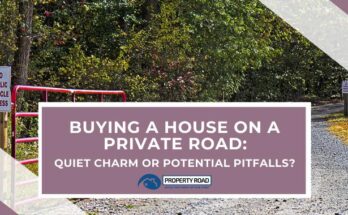The question of “how accurate are Land Registry boundaries” won’t occur to most people until there is an issue with their own property boundary – and the answer might surprise them.
When a property owner needs to provide proof of their boundary, it will be news to them that the Land Registry does not have a hand in defining property boundaries.
That responsibility falls on the landowner who sold the land, or the housebuilder.
It’s also surprising that there are no standards that must be adhered to when dividing up land and describing the boundaries in England and Wales.
But why is this important?
Home buying conveyancing process
As part of the home buying conveyancing process, you will be asked by your solicitor to check a boundary map and confirm the identified area is what you were expecting.
For some homebuyers, they may spot something is wrong, and the question of where your property boundary is will be raised.
Alternatively, if you’re buying land or are embroiled in a boundary dispute, the issue of where your boundary is will be crucial.
Here, the Property Road team helps you navigate the issue of how accurate are Land Registry boundaries.
What is the Land Registry?
The Land Registry is the government body responsible for maintaining the official record of who owns land and property in England and Wales.
To ensure it has an accurate record of all landownerships, it requires that applicants provide evidence of title which is satisfactory to them.
Essentially, applicants will provide a plan of the land which is being registered – but the Land Registry is legally required to only show the general positions of boundaries of the land in a registered title – as stated in the Land Registration Act 2002 (s60).
Indeed, this is made clear on the Gov.uk website, which states there is usually no record of:
- The exact boundary that sits between two properties;
- Ownership of hedges, fences, trees of walls between two properties.
To be clear, the rules in Scotland and Northern Ireland are different.
From the information given, a title plan is produced by the Land Registry that outlines the GENERAL position of boundaries of a registered title. This complies with Rule 5 of The Land Registration Rules 2003.
There are two important issues that everyone needs to understand:
- Land Registry title plans do not show the boundary’s exact line;
- Land Registry is NOT responsible for the definition of property boundaries.
You also need to appreciate that the title plan should not be confused with the title deeds.
Why are accurate plans important to the Land Registry?

If the Land Registry plans are not accurate, it can cause problems for buyers and sellers when they come to sell their property. It can also cause problems for people who are trying to buy land, as they may be unable to find out who owns it.
How are plans of land used by the Land Registry?
The Land Registry keeps a record of who owns land and property in England and Wales. These plans are also used to help people buy and sell land and property and to help resolve boundary disputes.
How can I check if the Land Registry plans are accurate?
If you want to check whether the Land Registry plans are accurate, you can do so by looking at the title register and title plan for your property. You can find these documents online, or you can request them from the Land Registry.
What does the law say about land ownership and boundaries?
The law on land ownership and boundaries can be found in several different places, including the Land Registration Act 2002, the Land Registration Rules 2003, and the Conveyancing Act 1968.
Who is responsible for maintaining accurate plans of land?
The Land Registry is responsible for maintaining plans of land. It is the responsibility of landowners to ensure that their plans are accurate when being submitted.
What are the consequences of inaccurate plans?
Inaccurate plans can cause problems for people who already own land or property, as they may find it difficult to get insurance cover for their property or may be liable for damage caused by their property to other people’s property.
What should I do if I think the Land Registry plans are inaccurate?
If you think that the Land Registry plans are inaccurate, you should contact the Land Registry and explain why. You should also send them a copy of your title register and title plan so that they can check the accuracy of the plans.
The Land Registry will then investigate your claim, and if they agree that the plans are inaccurate, they will correct them. However, if the Land Registry does not agree that the plans are inaccurate, you may need to get a solicitor to help you resolve the issue.
What is the Title Plan?

The title plan is a plan which is used to register title to land. The title plan shows the boundaries of the land which is being registered and includes any features on it, such as buildings or trees.
Why is it important to have an accurate title plan?
The title plan needs to be accurate because the Land Registry needs to have a record of all land ownership in England and Wales.
What the title plan does NOT show
The title plan does not show the ownership of the land. The title plan is a record of the land itself, not of who owns it. (You will need to check the title registry for ownership details – and even then, these will be the current details and not previous owners).
How to get an accurate title plan
The best way to get an accurate title plan is to commission one from a professional land surveyor. Be aware that the daily cost for doing so will range from £300 and up to £1,000 – depending on the amount of work involved.
How much does a title plan cost?
If you need a copy of your title plan the costs for doing so are reasonable. There is a scale of fees from £3 for applying online, and £7 by post.
Property Road Tip: Here’s a tip for anyone who is embroiled in a boundary dispute with a neighbour. When buying a copy of your property’s title plan, get one for your neighbour’s property too – just in case that has information that is not in yours.
Buying A Property? FREE Step-By-Step Platform
What should I do if I have a problem with my boundary?
If you have a problem with your boundary, you should first try to resolve the issue with your neighbour. If you are unable to reach an agreement, you may need to get a solicitor or surveyor involved.
Resolving a boundary dispute with a neighbour
Since property boundaries may be unclear, negotiation will be important to avoid legal action. You can check the title plan but be aware that starting a legal case will see costs quickly mounting up – and you will soon be paying more in fees than the value of the disputed land.
What is the 7-year boundary rule in the UK?

If you have a boundary dispute with a neighbour, you will hear of the ‘7-year boundary rule’ in the UK.
This applies to an unauthorised development and means a local authority cannot serve enforcement notices after seven years have passed from the start of it.
Put simply, if a neighbour is doing something on their land that you don’t like, and if they can prove they have been doing it for more than seven years, there’s little you can do.
Issues to be wary of when buying a house
When your conveyancing solicitor shows you the title plan for the land, take note of:
- What appears to be a straight fence has a dogleg in it. Why?
- Are there any neighbouring structures that are overhanging your land?
- Are the boundaries and/or fences in an unusual or unexpected position?
If there are questions, have the conveyancer investigate the issue and, if necessary, speak with your potential neighbour.
You should also check the Property Information Form – though the seller doesn’t have to reveal a boundary dispute unless they are asked the specific question.
The issue here is that the form might ask about current problems – while there might be a historic issue that has an impact on your boundary.
How accurate are Land Registry boundaries in the UK?
Essentially, while the Land Registry can define where the general boundary lies – it cannot prove it definitely, and it cannot show ownership of the land.
You will find that their plans are very similar to those provided by Ordnance Survey.
So, if the landowner or house builder has made a mistake in submitting their title plan, then you could be left with an expensive issue to resolve in trying to prove that you have title to the land if you have a boundary dispute.
If you are having issues, it’s worth going back to your conveyancing solicitor to see what their input is, and then consider investing in a land surveyor.





